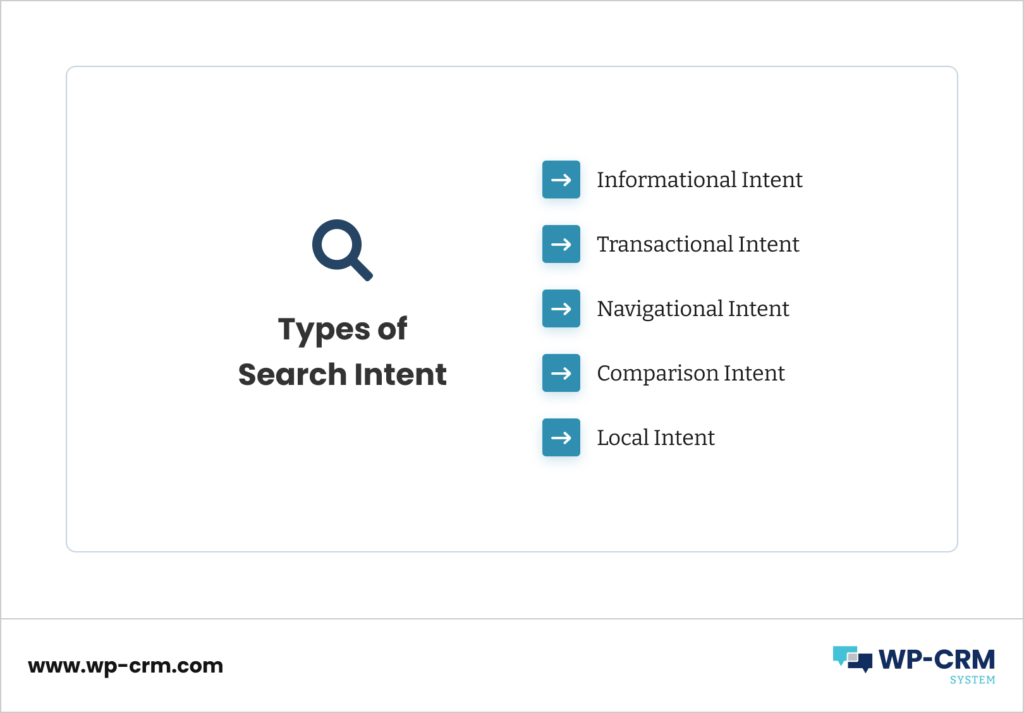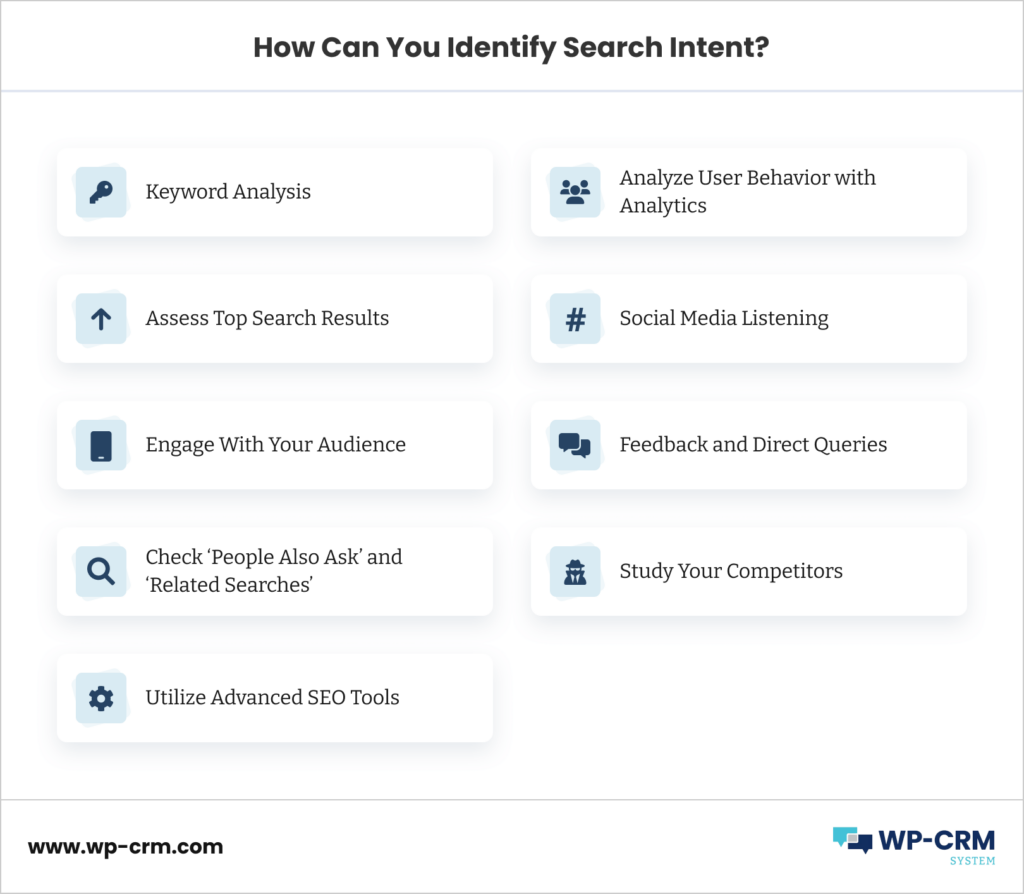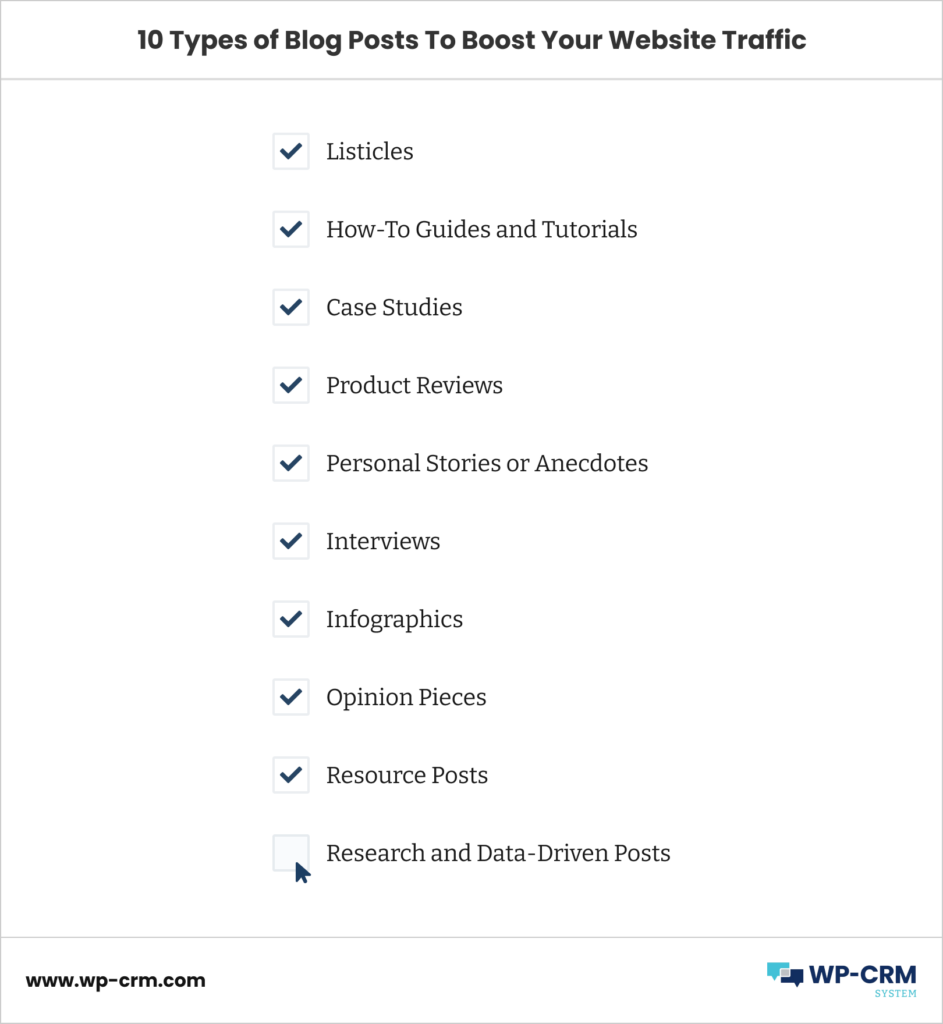What Types of Blog Posts Get The Most Traffic?
Blogging is an essential component of any successful online presence. However, with so many different types of blog posts out there, it can be tough to know which ones are most effective at attracting and retaining the right readers.
To maximize your traffic and engagement, it’s important to invest in a two-way communication with your audience. This can be via a CRM software, social media, blog comments etc. By creating content that’s not only informative and engaging, but also interactive and conversation-driven, you can build a loyal following of readers who are invested in what you have to say.
From polls and quizzes to guest posts and interviews, there are many ways to foster a dialogue with your audience and keep them coming back for more. In this article, we’ll explore the most popular and effective types of blog posts that can help increase your website’s traffic, engage your readers, and boost your online visibility.
Start By Identifying Search Intent
In the vast expanse of the internet, users resort to search engines with a plethora of intents and expectations. For content creators, understanding this user intent is fundamental. Why? Because marrying content with user intent equates to satisfied visitors, longer engagement, and higher conversions. When content resonates with what users are actively seeking, it becomes valuable, trustworthy, and authoritative in their eyes.
Types of Search Intent

Search intent can broadly be segmented into a few primary categories:
- Informational Intent. This is when users are in quest of knowledge. They may type in questions like “What is quantum physics?” or “The history of the Renaissance.” Here, they’re not necessarily looking to buy anything or navigate to a specific site; they’re in the information-gathering phase.
- Transactional Intent. Driven by the desire to perform an action, often a purchase, users with this intent might input searches such as “Buy waterproof hiking boots” or “Subscription to monthly gourmet coffee.” Their end goal is a transaction.
- Navigational Intent. This occurs when users already have a particular website or page in mind. Instead of typing out the URL, they might just search for “Twitter login” or “New York Times politics.” They want to navigate directly to a specific location on the web.
- Comparison Intent. Users want to compare products, services, or different pieces of information. Searches like “Android vs. iOS” or “Best DSLR cameras 2023” fall under this category.
- Local Intent. This intent is geographically tied. Users might be looking for a local service, restaurant, or event. Queries can be “Italian restaurants near me” or “Weekend events in Chicago”.
How Can You Identify Search Intent?

Understanding search intent is vital, and leveraging multiple strategies can provide a more comprehensive insight into what users truly seek. Consider the following:
- Keyword Analysis. Certain keywords or phrases are indicative of specific intents. For instance, “how to” or “ways to” often denote informational intent, while “buy” or “subscribe” signals transactional intent.
- Assess Top Search Results. Analyzing the content type and angle of the top search results for a particular keyword can provide insights into prevalent user intent.
- Engage With Your Audience. Direct interactions, surveys, or feedback can offer firsthand insights into what your audience is genuinely seeking.
- Check ‘People Also Ask’ and ‘Related Searches’. Google’s ‘People Also Ask’ box and the ‘Related Searches’ at the bottom of the search page can provide valuable insight into related queries and subtopics that users are interested in. This can help expand or refine your content to better address those tangential questions.
- Utilize Advanced SEO Tools. Platforms like Semrush, Ahrefs, and Moz offer features that analyze keyword intent, giving insights into why users might be searching for specific terms. They also provide information on keyword volume, competition, and related phrases, helping to craft a content strategy.
- Analyze User Behavior with Analytics. Tools like Google Analytics offer a deep dive into user behavior. By examining which pages users spend the most time on, or which content has the lowest bounce rate, you can infer the intent behind their searches.
- Social Media Listening. Platforms like Twitter (now ‘X’), Reddit, or industry-specific forums can be gold mines for gauging what topics or questions are trending. Monitoring these platforms can give insights into real-time user intent.
- Feedback and Direct Queries. If possible, add a feedback form or an option for users to ask questions on your site. Directly sourced questions often represent genuine search intent.
- Study Your Competitors. If certain competitors rank higher for specific keywords, analyze their content. What are they offering that you aren’t? This can give clues about user intent for specific search terms.
10 Types of Blog Posts To Boost Your Website Traffic

The online world is bustling with content on every imaginable topic. In this bustling digital market, the type of blog posts you produce can significantly impact your website traffic. Here’s a deeper dive into various blog post genres that effectively drive online engagement:
1. Listicles
Listicles are articles framed as lists. Readers adore listicles because they’re digestible and straightforward. They can quickly scan through the main points and dive into the ones they find intriguing. To optimize this format, use compelling visuals, maintain concise descriptions, and always ensure your headlines capture attention.
2. How-To Guides and Tutorials
People frequently search for solutions online. Detailed guides address these specific needs. When crafting them, always be comprehensive, breaking down steps or methods in a user-friendly manner. Visual aids like infographics or videos can further simplify complex processes for readers.
3. Case Studies
By delving into real-life scenarios, challenges, or success narratives, case studies lend authenticity to your content. They act as evidence of a strategy’s or product’s effectiveness. Incorporate actual data, demonstrable results, and candid testimonials to reinforce credibility.
4. Product Reviews
Potential customers often research online before making a purchase. Providing unbiased reviews, with hands-on experience about products, can attract this audience segment. Highlight the good and the bad, giving a well-rounded view. Include high-quality product images or even user-generated content, if possible.
5. Personal Stories or Anecdotes
A well-narrated personal experience offers relatability. Discussing individual hurdles, achievements, or revelations adds a human touch, allowing readers to connect at an emotional level. Such posts often invite shared experiences, spurring engagement in the comments section.
6. Interviews
Conversing with industry leaders or influencers brings varied insights to your platform. Readers value expert opinions and unique perspectives. Ensure your questions are thoughtful, delving into the interviewee’s expertise. Transcripts, podcasts, or video formats can make this content more accessible.
7. Infographics
With declining attention spans, visual data representation is a hit. Infographics are concise, engaging, and highly shareable. They distill complex information into easy-to-understand visuals. When creating one, focus on clarity, maintain a consistent design language, and always quote your data sources.
8. Opinion Pieces
Taking a definitive stance on current issues, industry trends, or general observations can spark discussions. While opinion pieces are inherently biased, they allow for deep dives into subjects, opening avenues for debates, agreements, or counterarguments in your audience.
9. Resource Posts
Such posts serve as a consolidated toolkit, directing readers to multiple resources—tools, websites, books, courses—under one umbrella topic. It’s a bookmark-worthy content type that, when updated regularly, can have readers returning for more.
10. Research and Data-Driven Posts
Original studies, surveys, or comprehensive data compilations add significant value. Such posts showcase authority and thoroughness. Ensure you’re transparent about your data sources, methodologies, and maintain a neutral tone while interpreting results.
In essence, every blog type mentioned above seeks to offer value in its unique way. In the competitive digital space, genuine value is what draws readers in and keeps them returning. Regardless of the blog type, focusing on originality, authenticity, and relevance will always resonate with your audience, driving consistent traffic.
Wrapping Up
The digital landscape is constantly evolving, and the types of blog posts you produce plays a pivotal role in attracting and retaining readers. Understanding the multifaceted dynamics of user intent and aligning your content accordingly is crucial. From insightful how-to guides to engaging listicles, each blog type serves a distinct purpose, resonating with varied audience segments. However, while producing content, always prioritize the reader’s needs. To truly tap into their pulse and curate types of blog posts they desire, consider tools like WP-CRM. Such tools foster stronger connections with your audience, ensuring your content strategy remains agile and relevant in a competitive digital world.
